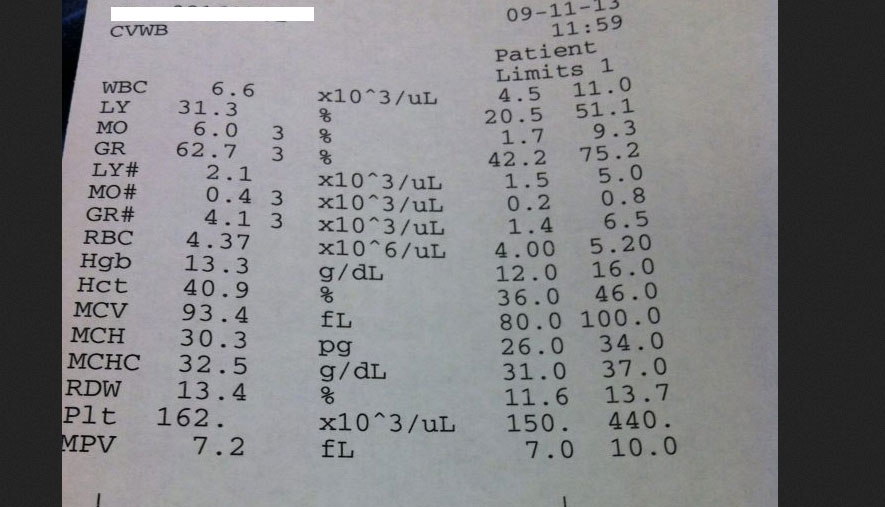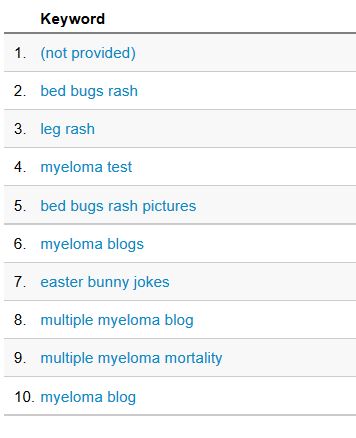The article is called “Analysis of the immune system of multiple myeloma patients achieving long-term disease control by multidimensional flow cytometry.” It makes me think they mean long-term disease control was achieved by flow cytometry. That would be pretty awesome. They really mean that the analysis was done using MFC.
http://www.ncbi.nlm.nih.gov/pmc/articles/PMC3533663/
Highlights (determined by me)
Multiple myeloma remains largely incurable. However, a few patients experience more than 10 years of relapse-free survival and can be considered as operationally cured. Interestingly, long-term disease control in multiple myeloma is not restricted to patients with a complete response, since some patients revert to having a profile of monoclonal gammopathy of undetermined significance.
My comments: How can the monoclonal gammopathy be characterized as being of undetermined significance, when the pt has had MM? Obviously, there is a significance. I’m just picking. I know what they mean. It’s good to see that they’re asserting that complete response is not required. I have never had that. I think people put too much emphasis on it.
In summary, our results indicate that multiple myeloma patients with long-term disease control have a constellation of unique immune changes favoring both immune cytotoxicity and recovery of B-cell production and homing, suggesting improved immune surveillance.
My Comments: None, really. I just like the word constellation. :) Dr. Peterson used to use that word a lot.
Despite the fact that until recently MM was considered incurable, the introduction of high dose therapy/autologous stem cell transplantation and novel drugs has made it possible for a small fraction of patients to attain long-term (?5 years) disease control even in the absence of a complete response, after reverting to having an MGUS-like profile. The underlying mechanisms leading to disease suppression in these patients are largely unknown, although immune surveillance has been hypothesized to play a critical role.
My Comments: This is me, in a nutshell. The small fraction.

 I don’t really blog much anymore, because I’m not being treated for my multiple myeloma these days. It’s been pretty stable for nearly six years. I try not to live in the myeloma world too much. Actually, I don’t really even try. It just works out that way. When I first learned I had myeloma, back in 2003, it was all I could think about, from the time I woke up in the morning, until the time I went to sleep. I’ve talked to a lot of people who experienced the same sort of involuntary obsessive thoughts about the disease. It’s a strange feeling. You know there’s something inside you that’s trying to kill you, and you can’t stop thinking about it. The farther you get from your last treatment, the less you think about it.
I don’t really blog much anymore, because I’m not being treated for my multiple myeloma these days. It’s been pretty stable for nearly six years. I try not to live in the myeloma world too much. Actually, I don’t really even try. It just works out that way. When I first learned I had myeloma, back in 2003, it was all I could think about, from the time I woke up in the morning, until the time I went to sleep. I’ve talked to a lot of people who experienced the same sort of involuntary obsessive thoughts about the disease. It’s a strange feeling. You know there’s something inside you that’s trying to kill you, and you can’t stop thinking about it. The farther you get from your last treatment, the less you think about it.
